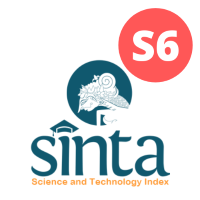IMPLIKASI ALGORITHMIC DECISION-MAKING (ADM) TERHADAP OTONOMI SUBYEK DATA DAN LEGALITASNYA DALAM PEMROSESAN BIG DATA
DOI:
https://doi.org/10.25170/paradigma.v9i2.5890Keywords:
Algorithmic decision making (ADM), Data Subject Autonomy, Profiling, Big DataAbstract
Penggunaan algorithmic decision making (ADM) dalam platform digital semakin lazim karena membawa kemudahan dan kemampuannya untuk pengambilan keputusan secara cepat. Contoh prominen penggunaan ADM adalah dalam bentuk pemrofilan (profiling). ADM merupakan suatu proses atas input data untuk menghasilkan suatu penilaian atau pilihan guna mengambil keputusan dan dicirikan oleh analisis atas data dalam jumlah besar dan otomasi untuk pengambilan keputusan dan eksekusinya. Namun demikian, penggunaan ADM dapat pula membatasi hak subyek data untuk membuat keputusan atas dirinya. Untuk mengkaji persoalan tersebut, penelitian ini dilakukan dengan menggunakan metode yuridis normatif. Penelitian dilakukan dengan studi pustaka atas data sekunder dan analisis dilakukan secara kualitatif. Hasil penelitian menunjukkan bahwa, pertama, penggunaan ADM dapat membatasi otonomi subyek data dan karenanya dapat dilakukan hanya dengan persetujuan subyek data. Kedua, dalam hal ADM dilakukan dalam pemrosesan big data, persetujuan subyek data tetap harus ada dan untuk itu perlu dibuat system pengelolaan persetujuan yang akuntabel
References
Ale, B. (2016). Risk Analysis and Big Data. Safety and Reliability. 36 (3). 153-165.
Bougette, P., Gautier, A., & Marty, F. (2022). Business Models and Incentives: For an Effects-Based Approach of Self-preferencing?. Journal of European Competition Law & Practice. 13 (2). 136–143.
Brand, D.J. (2020). Algorithmic Decision-Making and the Law. Journal of Democracy. 12 (1). 114-131.
Castelluccia, C. & Le Métayer, D., "Understanding Algorithmic Decision-Making: Opportunities and Challenges, EPRS, 2019. 1-88
Cauffman, C. & Goanta, C. (2021). A New Order: The Digital Services Act and Consumer Protection. European Journal of Risk Regulation. 12. 758–774.
Conrad, V. (2018). Digital Gold: Cybersecurity Regulations and Establishing the Free Trade of Big Data. William and Mary Business Law Review. 10 (1). 295-336.
Crawford & Schultz. (2014). Big Data and Due Process: Toward a Framework to Redress Predictive Privacy Harms. Boston College Law Review. 55 (1). 93-128.
Custers, B. & Malgieri, G. (2022). Priceless Data: Why the EU Fundamental Right to Data Protection Is at Odds with Trade in Personal Data. Computer Law & Security Review. 45. 1-11.
De Laat, P.B. (2017). Algorithmic Decision-Making Based on Machine Learning from Big Data: Can Transparency Restore Accountability?. Philosophy & Technology. 31. 525–541.
Ezrachi, A. & Stucke, M.E. (2016). Virtual Competition: The Promise and Perils of the Algorithm-Driven Economy. Cambridge: Harvard University Press.
Gal, M.S. (2018). Algorithmic Challenges to Autonomous Choice. Michigan Telecommunication & Technology Law Review. 25 (1). 59-104.
Gal, M.S. & Elkin-Koren, N. (2017). Algorithmic Consumers. Harvard Journal of Law and Technology. 30. 309-353.
Gianclaudio, M. & Giovanni, C. (2017). Why a Right to Legibility of Automated Decision-Making Exists in the General Data Protection Regulation. International Data Privacy Law. 7 (4). 243-265.
Gsenger, R. & Strle, T. (2021). Trust, Automation Bias and Aversion: Algorithmic Decision-Making in the Context of Credit scoring. Interdisciplinary Description of Complex Systems. 19(4). 542-560.
Hoffmann, H., Vogt, V., Hauer, M.P., & Zweig, K. (2022). Fairness by Awareness? On the Inclusion of Protected Features in Algorithmic Decisions. Computer Law & Security Review. 44. 1-12.
Hovenkamp, H. "Antotrust and Self-preferencing", Antitrust, Vol. 38, No. 1 (2023): 5-12.
Kaminski & Malgieri. (2021). Algorithmic Impact Assessments under the GDPR: Producing Multi-Layered Explanations. International Data Privacy Law. 11 (2). 125-144.
Kraft, T.D., Zweig, K.A., & König, P.D. (2020). How to Regulate Algorithmic Decision-Making: A Framework of Regulatory Requirements for Different Applications. Regulation & Governance. 16. 119–136.
Laurent, M., Leneutre, J., Chabridon, S., & Laaouane, I. (2019). Authenticated and Privacy-Preserving Consent Management in the Internet of Things. Procedia Computer Science. 151. 256-263.
Lembaran Negara Republik Indonesia Tahun 2022 Nomor 196.
Liu, Y. (2014). User Control of Personal Information Concerning Mobile-App: Notice and Consent? Computer Law & Security Review. 30 (5). 521-529.
Mantelero, A. (2013). Competitive Value of Data Protection: The Impact of Data Protection Regulation on Online Behaviour. International Data Privacy Law. 3 (4). 229-238.
Mantelero, A. (2014). The Future of Consumer Data Protection in the E.U. Re-Thinking the “Notice and Consent” Paradigm in the New Era of Predictive Analytics. Computer Law & Security Review. 30 (6). 643-660.
Merlec, M.M., Lee, Y.K., Hong, S.P., & In, H.P. (2021). A Smart Contract-Based Dynamic Consent Management System for Personal Data Usage under GDPR. Sensors 2021, 21(23), 7994
Osoba, O.A. & Welser IV, W. (2017). An Intelligence in Our Image: Bias and Errors in Artificial Intelligence. Santa Monica: Rand Corporation.
Pagallo, U. (2013). The Laws of Robots: Crimes, Contracts, and Torts. Dordrecht: Springer.
Regulation (EU) 2016/679 of the Parliament and of the Council of 27 April 2016 on the protection of natural persons with regard to the processing of personal data and on the free movement of such data, and repealing Directive 95/46/EC (General Data Protection Regulation).
Riahi, Y. & Riahi, S. (2018). Big Data and Big Data Analytics: Concepts, Types and Technologies. International Journal of Research and Engineering. 5 (9). 524-528.
Rubinfeld, D.L. & Gal, M. (2017). Access Barriers to Big Data. Arizona Law Review. 59. 339-381.
Rubinstein, I. (2013). Big Data: The End of Privacy or a New Beginning? International Data Privacy Law. 3 (2). 74-87.
Sun, L., Zhang, H, &Fang, C. (2021). Data Security Governance in the Era of Big Data: Status, Challenges, and Prospects. Data Science and Management. 2. 41-44.
Tene, O. & Polonetsky, J. (2013). Big Data for All: Privacy and User Control in the Age of Analytics. Northwestern Journal of Technology and Intellectual Property. 11 (5). 239-273.
Torre, C. Guazzo, G.M., Çekani, V., & Bacco, V. (2022). The Relationship between Big Data and Decision Making. A Systematic Literature Review. Journal of Service Science and Management. 15 (2). 89-107.
Tsohou, A. & Kosta, E. (2017) Enabling Valid Informed Consent for Location Tracking Through Privacy Awareness of Users: A Process Theory. Computer Law & Security Review. 33 (4). 434-457.
Tzanou, M. (Ed.) (2021). Health Data Privacy under the GDPR: Big Data Challenges and Regulatory Responses. Oxon & New York: Routledge.
Voigt, P. & von dem Bussche, A. (2017). The EU General Data Protection Regulation (GDPR): A Practical Guide. Cham: Springer.
Kittaka, Y., Sato, S. & Zennyo, Y. Self-preferencing by Platforms: A Literature Review," Japan and the World Economy, Vol. 66 (2023): 101191.
Zwitter, A. & Gstrein, O.J. (2020). Big Data, Privacy and COVID-19 – Learning from Humanitarian Expertise in Data Protection. Journal of International Humanitarian Action. 5 (4). 1-7.
Downloads
Published
Issue
Section
License
Copyright (c) 2024 Jurnal Paradigma Hukum Pembangunan

This work is licensed under a Creative Commons Attribution-NonCommercial-ShareAlike 4.0 International License.
Diperbolehkan atau tidak mempublikasikan tulisan di resopitory instansi penulis






